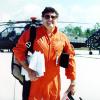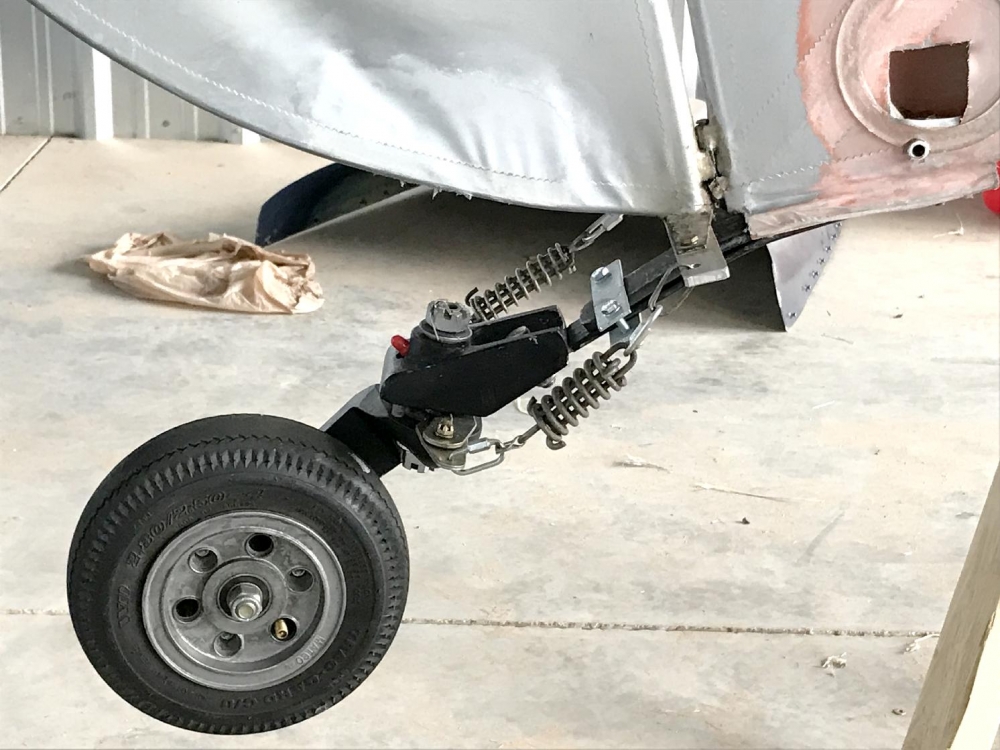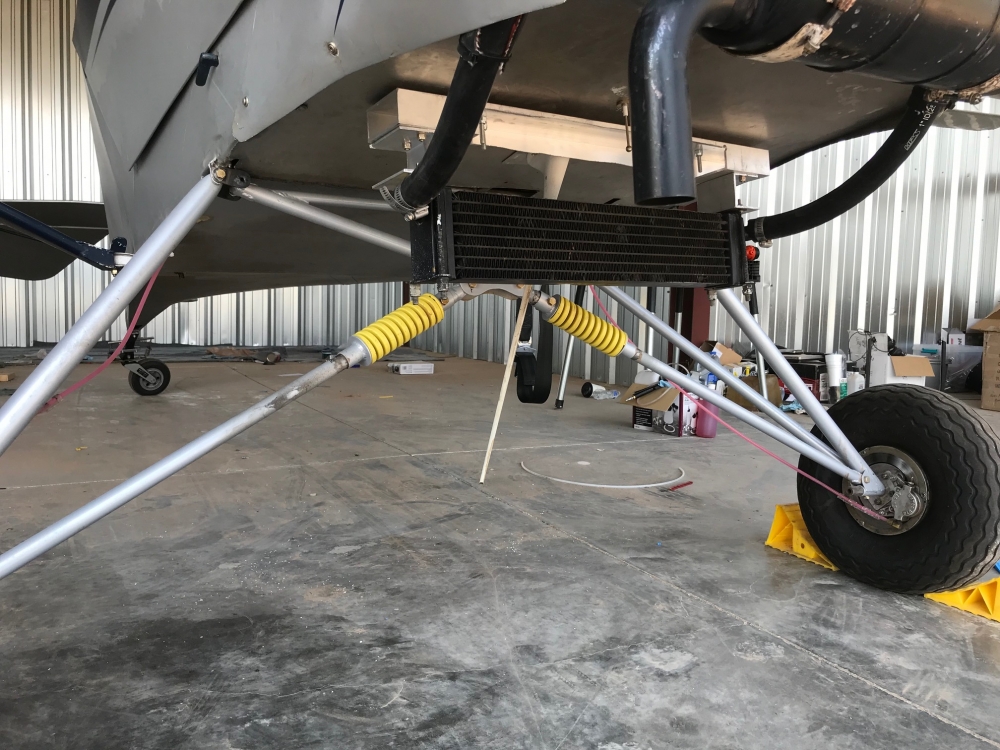-
Content count
688 -
Joined
-
Last visited
Posts posted by nlappos
-
-
The big deal is the airworthiness certificate. If you turn that back in, to save $200 a year (that's what I pay the A&P who does my annual) you must re-substantiate the airworthiness of the aircraft, not a small job, and now made more difficult because it is a pile of random parts, not a complete kit from the kit company. But if you are tearing it down anyway, you will do the work, so it might be worth it.
1 person likes this -
Page one where it shows performance says 1500'. Where did you see the 1850? JImChuk
On the takeoff performance charts, sea level, no wind, max gross, Page 28. But that's at 80 degrees, at 60 degrees it is 1700'
1 person likes this -
Here is the original pilot's manual, says 1850 feet over a 50' barrier no wind.
http://ohio.shortwingpiperclub.org/MaintenanceDataDepot/data/Misc_data/Colt_Owners_Manual.pdf
-
Wausau Spring can get you the tail spring custom made. I bought my springs from him and he was great. wausau.spring@frontier.com (715) 845-6335 cost about $75
I made a double spring, with the top section only partially down to the wheel, so it is stiffer on landing. I used a clamp to hold the double spring together.
-
Most engines, 2 stroke or 4 stroke don't fail. They are murdered! Plain and simple.
Absolutely true, and the best murder method, facts show, is letting too much air into the gas tanks.
1 person likes this -
Well here goes. I am saddened by folks who spend months putting automotive boat anchors in the nose of their sweet Avids.
I don't know, guys. My 670 ($3500 from Rotax Rick, swapped for a 582, and a literally easy drop in on the existing mounts) delivers over 90 horses, and weighs 10 lbs more than a 582. With Fitt gear and some fun doodads I have 600 lbs of useful load on my MK IV.
The "reliability" of a 4 stroke has lots of words, and I can see the forced landings on you tube to prove it is internet yahoo. The data I have seen from what is real says the 2 strokes and 4 strokes have similar reliability, especially if you factor in removing one passenger from your airplane as a result of putting a heavy car engine in your Avid. The Australians take this stuff seriously, and their data says Rotax has almost the same reliability as Continental and Lycoming.
If I were going to put 180 lbs of engine in my airplane, I'd put 140 lbs of Yamaha at 130+ HP and zoom off into the sunset. In fact maybe next year I will!
1 person likes this -
Neil, what was the model type, empty weight and gross weight of that VW Avid? I think that's what AK meant.
1 person likes this -
Having gone through the search that you are undertaking, I offer a couple of tips:
Look for the empty weight and Max gross weight of any aircraft are considering. The difference between the two is useful load, and that is what you are buying. It is surprising how little useful load there is in some early Avid and kit Fox models. The model designation is a bit flaky, because a homebuilt can be called anything the builder wants. Many B and C models are called Mark IVs by their sellers, but the rounded rudder and the max gross weight are dead giveaways.
There are lots of opinions on engines, but for my money the Rotax 582 is a terrific engine and gives you lots of performance and useful load. I swapped my 582 for a 670 because I needed the extra power up here in Utah at 6000 feet runway altitude.
If the seller does not have a good airworthiness certificate and registration, and a nice set of log books, be very wary. Some flaky sellers pull the airworthiness certificate and registration because they're afraid of liability, but for you to rebuild the airworthiness declaration is a really tough thing. You have to convince the FAA of every part on aircraft being airworthy. In my opinion if the seller has pulled the airworthiness certificate, run away.
Concentrate on the Mark IV Avid Flyer, those with a D in the serial number. Many of the Mark IV Avids weigh about 540 pounds empty and have a Max gross of 1150 pounds, so they have useful loads of over 600 pounds! That's two good-sized people and some gas.
Beware of B or C models with car engines, those engines weigh a lot and rob useful load. Many car-engine Avids are really one person airplanes. I know this comment will get a lot of snipes.
Don't be worried about buying an aircraft far away from home. Most home builds are nicely built, and Avid's are specially open and easy to inspect. Get lots of photos and if you think you like the aircraft send a deposit, go to the airplane by airline, get a checkout and flight home. I bought my airplane from a great guy who lives in California and one of the great adventures of my life was flying it back from Sacramento to Connecticut across our wonderful country.
Use this forum as your sounding board there are dozens of experts and many of us have seen exactly what you're going to go through and can offer our advice.
Good luck and enjoy the hunt!
2 people like this -
-
Bosstown Dynamics is not Boston Dynamics. This is a joke.
1 person likes this -
Does anyone have a lead on either a RX-1 (with EFI) mount or plans for one for a MK IV?
-
-
I really like everything that I know about the Avid series so far and am leaning towards an Avid for my first aircraft. If all goes according to plan, I will be in the market for a completed one late this year or early next. Does anyone know of any current owners in or near East Tennessee?
Thanks
J
I don't think you need restrict your search - I purposely bought an Avid a continent away, and flew it home! I borrowed hangar space from a great guy on this forum, to let me inspect and then checkout on the plane. The flight home, across the entire continent, was the trip of a lifetime.
1 person likes this -
Congratulations! And let us all help you since we have crossed many bridges that you face. But it is fun.
One tip, trailer the tailwheel carefully, support the tail with a strut to the frame, not thru the wheel and spring, which will break if the trailer bounces. That's because the folded wings put a lot more weight on the tail than it was designed to withstand dynamically. How do i know? I was dumb enough to break my TW spring that way!
1 person likes this -
Supermotive, can you cut and paste a few illustrations and facts for those of us who quit Facebook? Thanks
-
You're right Allen, but in fact a plaintiff's lawyer won't even take the case because he only makes money on the win, and pays all costs up front betting on the win. To line up experts and pay himself for all the prep is simply not worth it.
-
I provided the EAA form to the guy who sold me his Avid, it is a fine form, but you really don't need it. The EAA says that nobody ever won a suit against anybody else when flying an experimental aircraft. Juries simply laugh when the defense attorney reads the definition of Experimental, and when they see the large placard on the dashboard.
It is a shame when folks strip the airworthiness cert from their aircraft and de-register it out of fear of being sued.
2 people like this -
I did a fairly simple calculation. The springs bottom at about 12 feet per second of landing impact, at about 4 g's. If you land that hard in a Cessna, you make a fireball, part 23 requirements are about 8 feet per second. The springs are simply not the problem.
2 people like this -
count me in for 100.
-
This is a reminder of the tremendous weight cost of a certified 4 stroke, or a car engine, and why most of us fly happily with a Rotax or its equivilent.
For an aircraft with 400-500 lbs of useful load, the extra 125-140 pounds for the luxury of a big block 4 stroke (the Lycoming at 241 lbs is a perfect example) means I would leave my passenger on the ground.
I have a 91 HP Rotax 670 that would read 101 lbs on the scale the Lycoming hangs on. The Rotax 912 is only a few pounds more at maybe 120 lbs, and it has 115 HP. Giving up 125 pounds of payload is a decision that should not be made lightly, especially when good engines at 100 ish horsepower can be had at 100 lbs.
Barnstormers is full of Subaru Avids that carry their pilot and some gas.
-
Allen,
I found that the high temperature under the cowl was enough to cause an over rich problem because the temperature alone is like an altitude increase. It was so bad before i installed the scoop that I can get excellent run up with cowling off, when I put the cowling on I couldn't get past 3800 RPM!
1 person likes this -
AKFlyer,
I had to work on the leaning of the engine since I fly at 6000 ft runway elevation. I had to back down the main jets to 165 to allow a good takeoff, at 180 the full throttle takeoffs bog down and I can't get over 4000 rpm. With the 165 I get a clean burn and 6550 rpm at 60 mph, at about 8 GPH, which equates to about 75 HP, just right for a 91 HP engine at 8,000 feet.. I reinstalled my Hacman, and the 180 jets, and now I just lean a bunch on takeoff to get a nice power situation. I also noticed that the under cowl temperatures were very high (I used my wife's digital meat thermometer to read the carb inlet temp), and it was a solid 25 degrees F above ambient, which also leans the air like crazy. I cut a hole in the forward right cowl, and used a plastic window scoop to blow fresh air on the rotax air cleaners, and the temp went down to about 5 to 10 degrees above ambient.
I use the Facet pump at Rotax Rick's advice, the regular small air pump is only good for 8 GPH or so, and the 670 can ask for a lot more, up to 13, so the extra electric pump provides that.
1 person likes this -
I have a Rotax 670, and I installed a 2 to 4 psi Facet pump wired to the master switch, it runs all the time.
-



Oddball Question
in Technical tasks
Posted
One big trick is sunlight readability. Take the tablet outside and check. I use an old Ipad Mini 2, costs used on ebay about $100, and I use Garmin Pilot ($75 a year) and it is terrific!
I velcro the ipad on the panel, and it is like an efis.